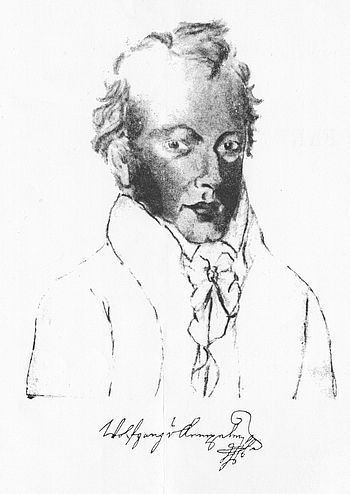
The performance of a French magician in 1769 for the Austrian empress Maria Theresia did little to impress him. So Wolfgang von Kempelen told the empress that he could build a machine that would be much more spectacular and amazing.
That moment marked the beginning of the history of the Chess Turk. The German-Hungarian court secretary and later court counsellor Wolfgang von Kempelen (1734 - 26 March 1804) from Bratislava kept his promise: In 1769 he presented his invention to the empress and her retinue. The audience was deeply impressed by the apparently automated chess player with an extraordinary command of the game.
London - Paris - USA
After von Kempelen had stupefied the Viennese court, he took the Chess Turk on tour through Europe until 1785, appearing before the finest society in London, Paris and numerous cities in Germany. The public never failed to be impressed by the performance. At the beginning, von Kempelen demonstrated his invention personally; later his servant Anthon took over this task.
After von Kempelen’s death in 1804, the mechanic and exhibitor Johann Nepomuk Mälzel bought the Chess Turk, and the chess-playing machine enjoyed a second heyday. Mälzel took it on tour through Europe, but in 1825 he also set out for America, where he gave his first performance on Broadway. Until his death in 1838, Mälzel traveled with the Chess Turk and other machines through the U.S. and Cuba. By 1840, the Chess Turk’s time was gone and visitors could learn its secret for one dollar, which caused a rapid decline in interest. In 1854, the machine burned in Philadelphia’s Chinese Museum.
The Chess Turk - a perfect illusion
The Chess Turk owes its chess-playing skill to a trick, but nonetheless it was a technical masterpiece in its own time. Magnetism helped the player hidden inside the Chess Turk to follow the game. A complicated mechanism moved the Chess Turk’s arms and fingers. And the perfect illusion which von Kempelen and later Mälzel were able to create through their professional presentation – including the necessary diversions and sleight-of-hand – made the whole performance seem like magic.
The functioning of this device was the subject of considerable and wide-ranging speculation. Had Kempelen really invented a genius machine that had the equivalent of human intelligence? Was it magnetic power or invisible strings that caused the Chess Turk to move? Or perhaps a dwarf or a child sat inside the device! Theories and suppositions filled articles and books. Some authors came close to guessing the truth, but nobody was truly able to reveal the secret.
Enthusiam for automated devices in the 18. century
We are left to speculate why von Kempelen constructed the player with the appearance of a Turk. In any event, this decision corresponded to the style of his day. Turkish coffee and tobacco were then modern in Vienna. In addition, a foreign-looking player made the machine seem more exotic.
The enthusiasm of the ruling houses of the 18th century for automated devices was widespread, and their creators were highly regarded. The most well-known of them was Jacques de Vaucanson, who became famous during the first half of the 18th century with his music machine. (He also built a mechanical duck which could eat grain, digest it, and excrete.) Wolfgang von Kempelen contributed more than just his Chess Turk to this fashion for automated devices. He constructed a speaking machine which is considered his true masterpiece.
The Chess Turk played against famous opponents
Over the course of his career, the Chess Turk played against several famous opponents. In addition to games with Empress Maria Theresia and Benjamin Franklin, the match against Napoleon in 1809 in Vienna was the highlight of his career. Napoleon tried to test the Chess Turk by making illegal moves. The Chess Turk is said to have reacted first by bowing and then by placing the illegally-moved chess figure on the correct spot. After Napoleon made further attempts to deceive the machine, the Chess Turk swept all the pieces off the table, earning the praise of the French emperor.
Tracking down the secret
Equally enthusiastic about the machine’s accomplishments was Charles Babbage, who lost a game to the Chess Turk in London in 1819. Although he suspected that the machine wasn’t really the player, he nonetheless asked himself whether it was possible to build a chess-playing machine. The mechanical calculating machines he later built anticipated many of the important principles of today’s computers.
Edgar Allan Poe’s description of the Chess Turk is perhaps the machine’s most well-known testament. Poe saw the machine in performance in Richmond, Virginia in 1835, and in 1836 he published an essay entitled “Maelzels Chess-Player”. Poe suspected that a hidden player inside the Turk moved its arm. This report was later credited as the first work of Poe’s in which his “unwavering” thinking skills were demonstrated.
There are many treatments of the “life” of the Chess Turk. The most exhaustive and exciting is Tom Standage’s “The Turk”, which was published in 2002 by Walker & Company.